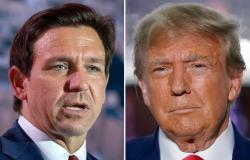NEW YORK, March 28 (Reuters) – The dollar gained on the euro on Thursday after a US Federal Reserve policy maker said he wasn’t in a hurry to cut rates, while traders also prepared for key US economic data due on Friday and squared positions for month- and quarter-end.
The Japanese currency was slightly firmer at 151.26 per dollar having traded just shy of the 152 mark at its weakest since 1990 on Wednesday before Japan’s top monetary officials suggested they were ready to intervene to prevent further declines.
Fed Governor Christopher Waller said late on Wednesday that recent disappointing inflation data affirms the case for the US central bank holding off on cutting its short-term interest rate target.
“Waller is one of the more important Fed policy makers and, while I don’t see this being a big move, the remarks have put some momentum into the market which has been stuck in very tight trading ranges,” Lee Hardman, senior currency strategist at MUFG, said.
Market expectations for the first rate cut to occur at the Fed’s June meeting have eased as traders prepared for the possibility that the US central bank could hold rates higher for longer. Current pricing has it at a 64% chance, compared with 70% around this time last week, according to the CME Group’s FedWatch tool.
But stickier-than-expected inflation in January and February is unlikely to be replicated in March, Helen Given, FX trader at Monex USA, said. The Fed is unlikely to change its rate cut projections, she added.
US stocks ended higher on Wednesday, with the S&P 500 setting another closing record ahead of Friday’s key inflation report.
“Today’s movement is a little bit outsized and I think its really to do with the fact that there’s just slim flows across the world,” Given said.
This week’s main economic focus is Personal Consumption Expenditures (PCE) data due on Friday. Fed Chair Jerome Powell is also due to speak on Friday.
Data on Thursday showed that the US economy grew faster than previously estimated in the fourth quarter, lifted by strong consumer spending and business investment in non-residential structures such as factories.
The euro reached $1.0775, its lowest in five weeks, and was last down 0.16% at $1.0809. The pound strengthened 0.05% to $1,264.
The dollar index fell 0.05% to 104.37, after earlier touching 104.73, its highest since mid-February.
Analysts expect portfolio managers to sell the greenback for month- and quarter-end rebalancing.
INTERVENTION WATCH
Should the inflation data on Friday surprise on the upside and support the dollar, its most dramatic impact could be on the yen. Market participants say there is a dense thicket of options restricting moves in dollar/yen around the 152 level, and so a breakthrough could trigger more significant moves.
“Once dollar/yen touches 152, I think there will probably be a sharp move upwards, and that’s when intervention could take place,” Takeshi Ishida, a currency strategist at Resona Holdings, said.
Light trading volumes, with US Treasuries and stocks markets closed for the Good Friday holiday, could add to any volatility.
Japanese authorities held a meeting on Wednesday on the currency’s weakness and ramped up their verbal warnings, putting the market on the lookout for any signs that words are being backed up with action.
Japanese Prime Minister Fumio Kishida also said on Thursday the government will not rule out any options in addressing excessive moves in the currency market, stressing Tokyo’s resolve to step into the market if it sees the yen’s fall as overdone.
“Each time that currency officials in Japan have talked about this, it’s had less and less of an impact on yen pricing,” Given said. “Because of that we are now looking at a real tangible intervention risk.”
Japan intervened in the currency market three times in 2022, selling the dollar to buy yen, first in September and again in October as the yen slid towards a 32-year low of 152 to the dollar.
A summary of opinions at the Bank of Japan’s March meeting released last Thursday gave the currency little support, showing many policymakers saw the need to go slow in phasing out ultra-loose monetary policy.
Meanwhile, China’s central bank set the yuan fixing at the widest gap against Reuters’ estimate in nearly five months, as authorities step up efforts to prevent sharp declines in the currency. The yuan slumped to a four-month low last Friday. CNY/
The onshore yuan was mostly flat at 7.2278 per dollar, while offshore it was at 7.2590 per dollar, a touch weaker.
The Australian dollar fell as low as $0.6486, the weakest since March 5. As well as being hurt by Waller’s remarks, data from Australia showed retail sales came in below economists’ expectations in February. AUD/
In cryptocurrencies, bitcoin gained 2.93% to $70,888.00.
Reporting By Karen Brettell; Additional reporting by Brigid Riley and Alun John; Editing by Andrew Heavens
Disclaimer: The views expressed in this article are those of the author and may not reflect those of Kitco Metals Inc. The author has made every effort to ensure accuracy of information provided; however, neither Kitco Metals Inc. nor the author can guarantee such accuracy. This article is strictly for informational purposes only. It is not a solicitation to make any exchange in commodities, securities or other financial instruments. Kitco Metals Inc. and the author of this article do not accept culpability for losses and/or damages arising from the use of this publication.
-





